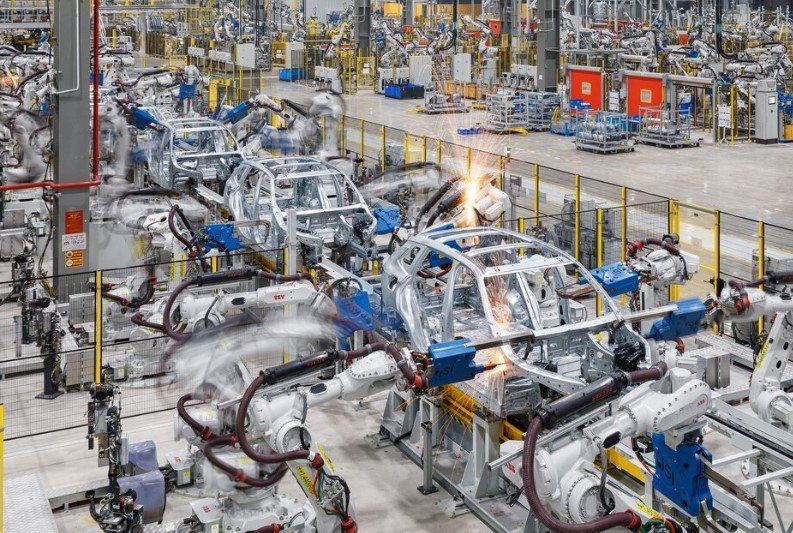U.S. pressures Hanoi to clean up supply chains or risk facing punishing tariffs
The United States is leaning on Vietnam to rethink how it builds tech goods—specifically, to use less Chinese stuff. Washington isn’t being subtle either: reduce Chinese tech in your exports, or get ready for more tariffs.
This isn’t just a shot across the bow. Vietnam’s economy is built around exports, and the U.S. is its biggest customer. The stakes? Very real. And very expensive.
Vietnam’s assembly lines under Washington’s microscope
Vietnam has spent years building itself into a manufacturing powerhouse. Apple, Samsung, Google, Meta—big names have moved production lines there. But those same factories are still tethered to Chinese supply chains.
One official involved in the talks said the U.S. made it clear: “We want Vietnam to cut the Chinese high-tech out.” That’s not easy when nearly every gadget, from VR headsets to smartphones, contains some component with a Made in China label.
Two other insiders confirmed that American diplomats and trade officials are quietly pushing Hanoi to clean house. And fast.

Domestic push meets real-world limits
In response, Vietnamese officials have started nudging local companies to ditch Chinese parts and go domestic. Some are trying. Others are scratching their heads, wondering how they’re supposed to do this overnight.
A local business executive told Reuters, “We get the pressure, but replacing Chinese tech isn’t like switching light bulbs. It takes time. And money. And better local alternatives.”
For now, the government is focusing on coordination—talks, consultations, roundtables. But the clock is ticking.
-
Vietnamese firms warn they need:
-
More time to develop alternative sources
-
Support with R&D and component design
-
Assurances the U.S. won’t slap tariffs while they transition
-
The concern is that without a real cushion, the policy shift could do more harm than good.
The tariff threat looms large
Tariffs aren’t just a hypothetical. The Trump administration, during its last term, floated the idea of hitting Vietnam with duties as high as 46%. That threat is still alive.
And it would hit hard.
Here’s why Vietnam can’t take that lightly:
| Factor | Details |
|---|---|
| U.S. Trade Share | Largest export destination for Vietnam |
| Sector Impacted | Tech hardware: phones, VR gear, electronics |
| Dependency | Most of these rely on Chinese semiconductors or modules |
| Tariff Risk | Up to 46% (previously proposed) |
| GDP Exposure | Exports = ~100% of Vietnam’s GDP |
One source with knowledge of the ongoing talks said the tone from Washington is different this time—more strategic, less erratic. But still firm.
“The message is the same: decouple from China, or pay the price.”
U.S. recalibrates global tech pipelines
Behind all this is Washington’s broader strategy: restructure global supply chains and reduce dependence on China for high-tech components.
And Vietnam? It’s caught in the middle.
Yes, it’s a manufacturing darling now, but its back-end supply chain still leans hard on Chinese semiconductors, modules, and displays.
“We’re not trying to be aggressive,” one U.S. trade official reportedly said. “We just need to stop feeding the ecosystem we’re trying to exit.”
That’s where things get tricky. Because even if Vietnam says yes, building out the missing links—like chip fabs, testing, and packaging facilities—takes years. And billions.
Big Tech watches quietly from the sidelines
You’d think companies like Apple or Samsung would be raising alarm bells. But so far, they’ve kept their heads down.
Their model depends on assembly in Vietnam using parts from, well, everywhere—including China.
And let’s be honest, no one wants to retool an entire supply chain just because Washington snapped its fingers. Still, there are quiet moves happening.
One Vietnamese contractor that assembles VR headsets said it had received “new instructions” from a U.S.-based client to begin sourcing from South Korea and Taiwan instead of China.
It’s small stuff for now, but the ripple effect could grow.
Vietnam’s long-term bet: build its own tech backbone
Hanoi knows that to stay relevant, it needs more than just cheap labor and free trade deals. It needs to make things—real, complex, valuable things.
The U.S. pressure could accelerate that. Or break it.
A senior official in Vietnam’s Ministry of Planning and Investment said they’re working on incentives for local tech startups, foreign investors in component manufacturing, and joint ventures that bypass China.
Maybe. But even the most optimistic estimates suggest it will take at least 3 to 5 years to build up that kind of industrial capacity.








